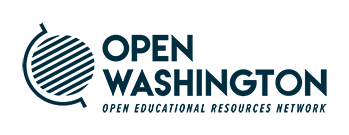Module 4: Open Licenses
Module 4: Open Licenses
What is an open license?
If you recall, in Module 2 we explained that a license is permission you get from the copyright owner of the work you want to use
An OPEN license is a type of license that grants permission to access, re-use and redistribute a work with few or no restrictions.
Where did it all start?
Allow me to give you a bit of background. You have probably heard of an open source license, a type of license for computer software that allows source code to be used, modified and shared under defined terms.
The free software movement was launched in 1983. Since then, the folks in the computer software world have been widely developing and sharing open source code with a clear licensing system. Additionally, other open licenses in computer-related areas have been developed, such as open database licenses and open game licenses.
How do we openly license the rest of the materials that are not computer related?
In 2001, inspired by this open source license move in the computer software world, a group of experts comprised of educators, technologists, legal scholars, investors, entrepreneurs, and philanthropists gathered together. They worked to come up with a set of copyright licenses that would allow creators to easily share materials that were not software code, such as blogs, photos, films, books, etc.
They founded a nonprofit organization called Creative Commons and developed the first set of open licenses in 2002. These Creative Commons licenses brought clarity and ease to sharing materials online.
In summary, there are many open licenses developed for different areas of knowledge. Creative Commons licenses are the most widely used copyright licenses that allow creators to easily share materials that are not software code, such as blogs, photos, films, books, etc.
What Next?
We will discuss Creative Commons more specifically in Module 5
